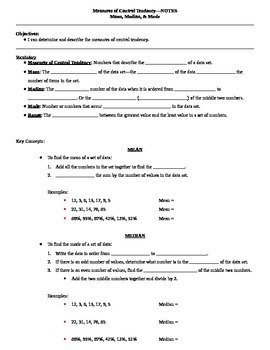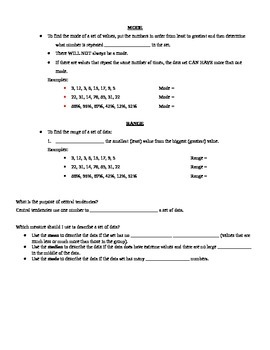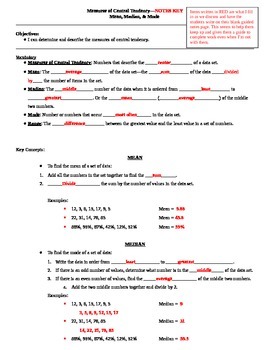Measures of Central Tendency Guided Notes
- Word Document File
Description
These are guided notes for a lesson on measures of central tendency including mean, median, mode, and range.
There are several examples in the notes and the same data sets are used to show each measure of central tendency.
I have also included a teacher key to show you what to fill in the blanks as your students follow along.
To use these notes, I simply projected them onto my whiteboard, gave the students their blank copies, and had them follow along and write what I wrote. This works great when you don't have time, or students do not have the attention span, to take lengthy notes and still leave time for working independently! You could also save as a PDF and use an interactive board to annotate.
I have several others I am working on getting teacher keys for. Let me know if you're searching for a particular topic/lesson!





